

Context
As a part of India’s G20 Presidency between December 2022 and November 2023, the Government is planning to host five key meetings focusing on the cultural influence at Khajuraho, Bhubaneswar, Hampi and Agra for their ancient linkages and worldwide recognitions.
About
The FIVE sites listed: (Showcasing Cultural Agenda)
The Agra Fort, UP:
- It is an important 16th-century Mughal monument known as the Red Fort of Agra.
- This powerful fortress of red sandstone encompasses, within its 2.5-km-long enclosure walls, the imperial city of the Mughal rulers.
- It comprises many fairy-tale palaces, such as the Jahangir Palace and the Khas Mahal, built by Shah Jahan; audience halls, such as the Diwan-i-Khas; and two very beautiful mosques.
- The Agra Fort, also known as the “Lal –Qila”, “Fort Rouge” or “Qila-i-Akbari”, is the highlight of the city of Agra, then capital of the Mughal Sultanate.
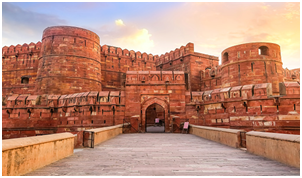
The Taj Mahal, Uttar Pradesh:
- It is an immense mausoleum of white marble, built in Agra between 1631 and 1648 by order of the Mughal emperor Shah Jahan in memory of his favourite wife, the Taj Mahal is the jewel of Muslim art in India and one of the universally admired masterpieces of the world's heritage.
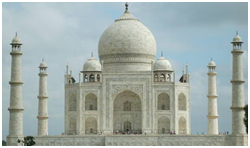
The Konark Sun Temple, Odisha:
- Konark Sun Temple is a 13th-century CE (year 1250) Sun temple at Konark about 35 kilometres (22 mi) northeast from Puri city on the coastline in Puri district, Odisha, India.
- The temple is attributed to king Narasimhadeva I of the Eastern Ganga dynasty about 1250 CE.
- Dedicated to the Hindu Sun God Surya, what remains of the temple complex has the appearance of a 100-foot (30 m) high chariot with immense wheels and horses, all carved from stone.
- The structures and elements that have survived are famed for their intricate artwork, iconography, and themes, including erotic kama and mithuna scenes.
- Also called the Surya Devalaya, it is a classic illustration of the Odisha style of Architecture or Kalinga architecture.
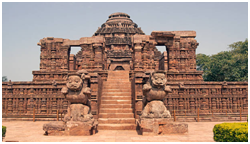
The Khajuraho Temple, Madhya Pradesh:
- The Khajuraho Group of Monuments are a group of Hindu and Jain temples in Chhatarpur district, Madhya Pradesh, India, about 175 kilometres southeast of Jhansi.
- They are a UNESCO World Heritage Site. The temples are famous for their nagara-style architectural symbolism and a few erotic sculptures.
- Most Khajuraho temples were built between 885 AD and 1000 AD by the Chandela dynasty. Historical records note that the Khajuraho temple site had 85 temples by the 12th century, spread over 20 square kilometers.
- Of these, only about 25 temples have survived, spread over six square kilometers.
- Of the surviving temples, the Kandariya Mahadeva Temple is decorated with a profusion of sculptures with intricate details, symbolism and expressiveness of ancient Indian art.
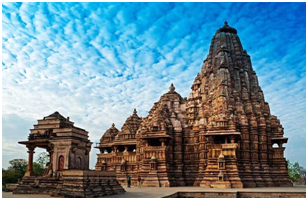
The Hampi, Karnataka:
- Hampi was the capital of the Vijayanagara Empire in the 14th century. It was a fortified city.
- Chronicles left by Persian and European travellers, particularly the Portuguese, say that Hampi was a prosperous, wealthy and grand city near the Tungabhadra River, with numerous temples, farms and trading markets.
- By 1500 CE, Hampi-Vijayanagara was the world's second-largest medieval-era city after Beijing and probably India's richest at that time, attracting traders from Persia and Portugal.
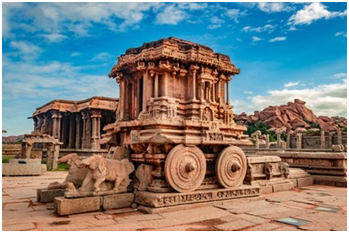
|
G20 Presidency: India’s Role
|

